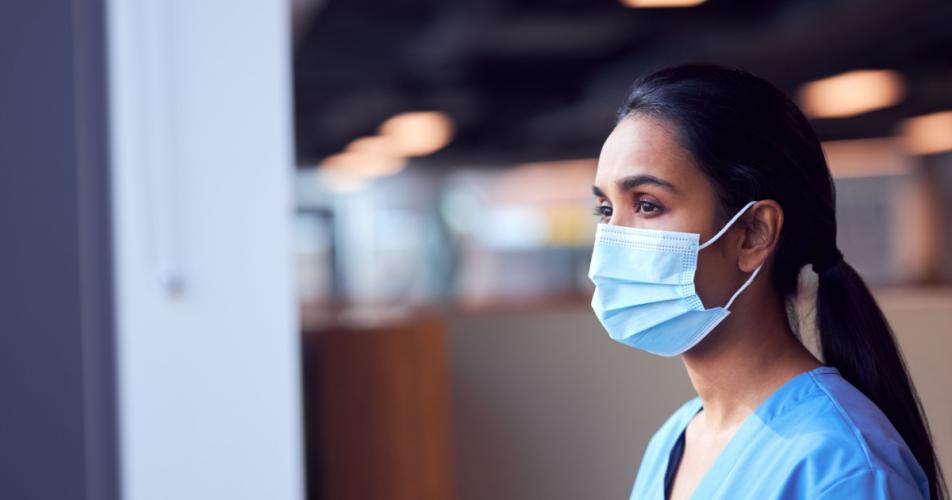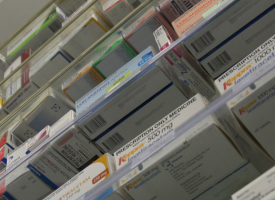Healthcare workforce is exhausted - "They're stuffed."
"They're stuffed." That's AMA Queensland President Dr Nick Yim's summation of the health workforce post pandemic. "What we're hearing from our doctors, our nurses, our health professionals, they're just exhausted. Over the past couple of years, they've been working harder. Our population has grown. That also means that our chronic disease is rising. And obviously that's the reliance on the healthcare sector. So they're stuffed."

Transcript: AMA Queensland President, Dr Nick Yim, ABC Brisbane, Drive with Kelly Higgins-Devine, Tuesday 23 July 2024
Subject: Healthcare workforce burnout and turnover
KELLY HIGGINS-DEVINE: Gone are the days when our doctors and healthcare professionals are willing to work 60-plus hour weeks, sacrificing things like family time and mental wellbeing for the job. This is a good thing. Doctors are humans too, and definitely deserve some work-life balance. But it is having an impact on our healthcare system, and the state's peak body for doctors is warning it's time for a pretty big cultural change within the industry if we want to keep our healthcare system running. Dr Nick Yim is the president of the Australian Medical Association Queensland. Dr Yim, good afternoon. What are you hearing from doctors at the moment about workloads?
DR NICK YIM: What we're hearing from our doctors, our nurses, our health professionals, they're just exhausted. Over the past couple of years, they've been working harder. Our population has grown. That also means that our chronic disease is rising. And obviously that's the reliance on the healthcare sector. So they're stuffed.
KELLY HIGGINS-DEVINE: Basically they're stuffed, which I think encapsulates it nicely. So what are the key factors then driving doctors away from the profession? Is it just that it's all too much?
DR NICK YIM: You’ve highlighted the fact that gone are the days where doctors are working 60, 70 hours a week, which is a good thing. We do want doctors that are looking after themselves. They want to spend more time with their family, they do want to have that work-life balance. So that means we do need an additional workforce. And we know unfortunately by 2030, there is going to be a worldwide shortage of healthcare workers by about 10 million.
KELLY HIGGINS-DEVINE: Ten million around the world?
DR NICK YIM: Around the world. Which is a big, big number.
KELLY HIGGINS-DEVINE: It certainly is. So how do we combat that?
DR NICK YIM: We need to talk about our workforce in Queensland. Whether you live at Gold Coast, Brisbane, all the way up north to Cairns or out west to Mount Isa, workforce is really important. You've got to recruit them, but at the same time we need to ensure that we are retaining these healthcare professionals in those regions because it's quite costly to keep retraining and retraining when people do resign and move elsewhere.
KELLY HIGGINS-DEVINE: Dr Yim, you're calling for a culture change within the healthcare system. What would that look like?
DR NICK YIM: What we're hearing from doctors in areas where there is high turnover is that often it's related to cultural change within the hospital. We are hearing from many doctors in training, consultant doctors, that bullying, harassment and discrimination is still an issue. That's something that we do need to address because doctors, healthcare workers, nurses, they do need to have a safe environment to work. And that's something that we're hoping that the Queensland Government can address.
KELLY HIGGINS-DEVINE: It's interesting, isn't it, because we spend our kids’ childhoods telling them, don't be bullies, don't act like that, don't speak to people disrespectfully, and then they get into a profession that should be respectful and it's not.
DR NICK YIM: That's one of the concerns. It is a multifaceted issue. Most people who go to their work, they don't want to be bullies, they don't want to be harassing others. But it could be due to the pressures of workload complexity and access to services. To give you a bit of an idea, we know that the surgery waitlist is quite lengthy and that's one of the areas where there's pressure. So AMA Queensland is holding a Surgical Wait List Roundtable which is addressing those concerns, to develop strategies for regional Queensland and also metropolitan areas to see how we can address those wait lists in surgical areas.
KELLY HIGGINS-DEVINE: What are you thinking, then? What are the ideas for doing exactly that?
DR NICK YIM: It’s going to be a multi-step process. It's not one model will fit everywhere. We can't use the same model in Wide Bay as in Cairns or out west. We need multiple models, different strategies. It's listening to frontline staff, the nurses, the doctors, to see what model is going to work in that region.
KELLY HIGGINS-DEVINE: You're hearing from Dr Nick Yim who's President of the Australian Medical Association Queensland. And it seems that we're going to be running out of doctors and nurses. A lot of them are looking at leaving the profession because of pressure and all the other things you've heard this afternoon, such as bullying, and that we're going to be well under the amount of medical professionals and health professionals that we're going to need. You've mentioned 2030, Dr Yim, but I think it might be before that. It feels like it's almost now.
DR NICK YIM: We do have the pressures now. I'm sure your listeners are feeling pressured - getting to see your GP, getting into the hospital-based system, getting elective surgery. There are things that have been beneficial. We have seen increased budgets announced by the Queensland Government, and incentives for doctors to enter general practice training. That's a start. But we need to ensure that we continue to invest now and maintaining that investment for the hospitals and also in primary care.
KELLY HIGGINS-DEVINE: Is it about encouraging or opening up the numbers, the provider numbers, to have more GPs?
DR NICK YIM: That is one strategy, but it's also ensuring that we are utilising the existing infrastructures that we have in place. That's the key thing. It's not just about building more and more buildings. We need to ensure that we have the workers. We've already got a lot of great buildings. We've got a lot of great facilities. We just need to ensure that those healthcare facilities are working more efficiently. And that's where we can invest in.
KELLY HIGGINS-DEVINE: So what does the future look like if we continue on the current trajectory?
DR NICK YIM: One of the challenges is the revolving door. In Wide Bay, my region, what we have seen is unfortunately doctors sometimes do leave after three or four years, and that affects the continuity of care for individual patients. My patients, they love to see me if they can see me every single time. I'm trying to develop that culture where we can bring in more doctors to provide that service in that individual practice, for example.
The other thing is we do need to continue to work collaboratively with all our health colleagues and also involve different models of care. That could be bringing potentially surgeons and specialists from Brisbane into the regional and rural areas and also utilise our technology. And we've have seen that with telehealth.
KELLY HIGGINS-DEVINE: Last month, the state government announced a $1.7 billion investment to grow and retain frontline staff through to 2032. Do we know how this funding is going to be used?
DR NICK YIM: It could involve incentives, different structures that could be in place. But funding utilised in one area might be a little bit different to another area, say North Queensland. So I think it needs to be individualised to each health service. And I guess the element of flexibility is clearly needed for that funding.
KELLY HIGGINS-DEVINE: Dr Yim, interesting conversation and one no doubt we're going to be looking at down the road. Thank you.



